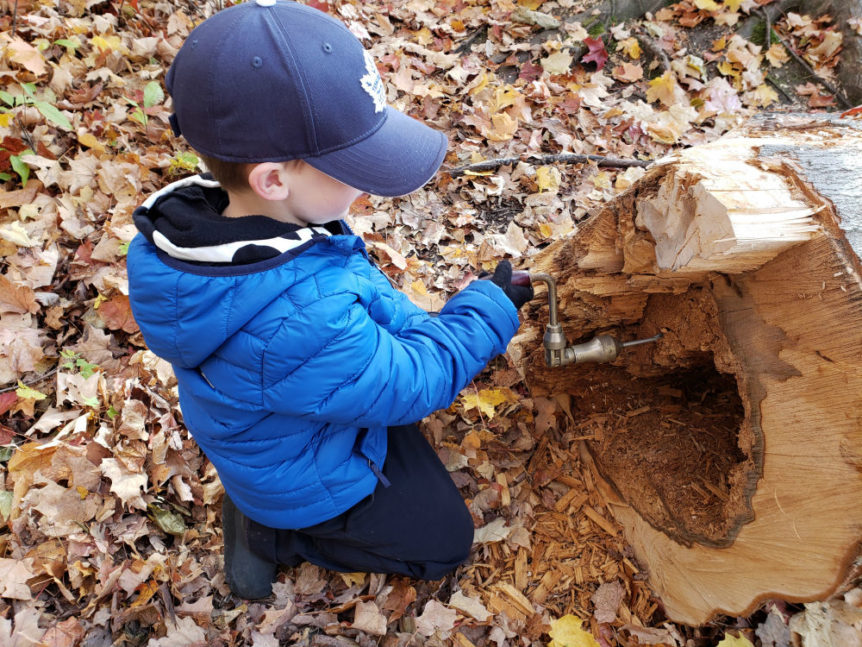We are so excited to be back in the woods with the Forest School Kinders once again! The children have begun connecting with “their” forest in so many ways and learning how to be safe in a variety of different environments and activities. They have also begun showing their competencies in assessing risks.
As part of our program, the children have begun their journey with tool use in the forest as well as in the Nature Classroom. Many of the children recognized the tools we have introduced thus far from home, having seen family members use them to build or repair things around the house or cottage. We are very excited to be using tools ourselves to both create and explore!
Have you heard of Hap-a-zome?
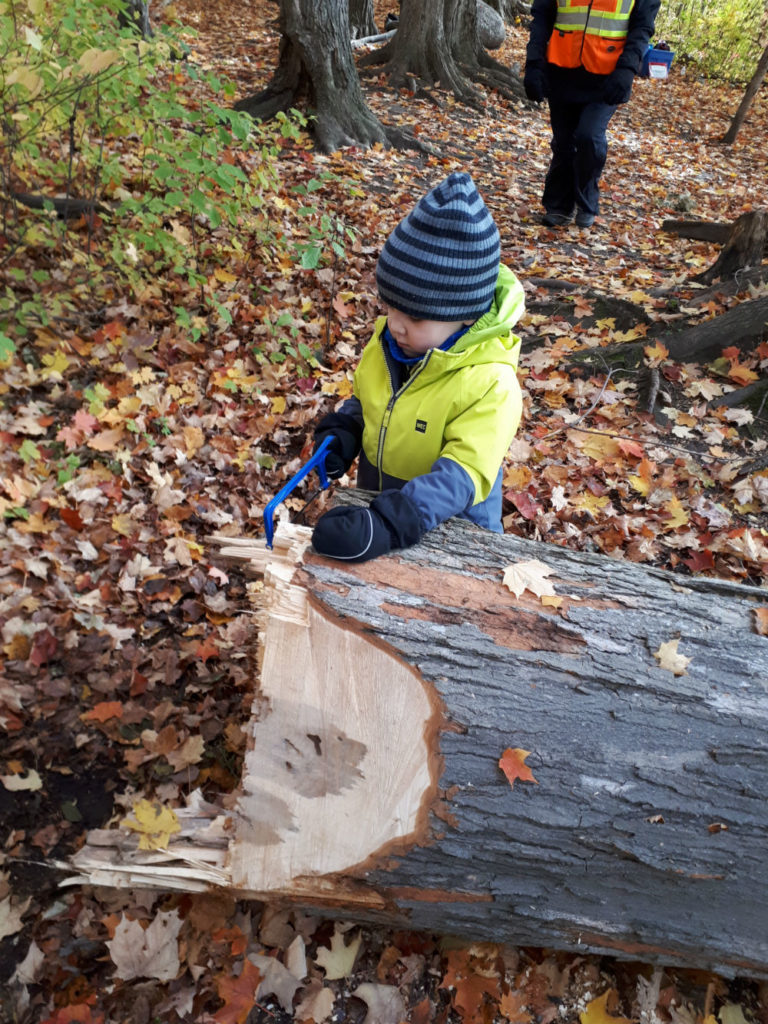
Did you know that you can create artwork using a hammer and it’s called Hap-a-zome? It is a Japanese art form in which hammers are used to smash plants, forcing the “plant juice” out of them and onto paper, fabric and even canvas to create colourful works of art. While the art turns out beautifully unique each time, the activity has encouraged us to pay close attention to what we are doing so only the plants are being hit with the hammer.
The smell of herbs and flowers from our garden, the sound of the hammers tapping on different surfaces and learning through trial and error about which plants give us the colours we want, keeps our senses busy while our little fingers grasp the hammer tightly as we use just the right amount of force. It took us a little time, but each of us found our rhythm!
Using hand drills for the first time
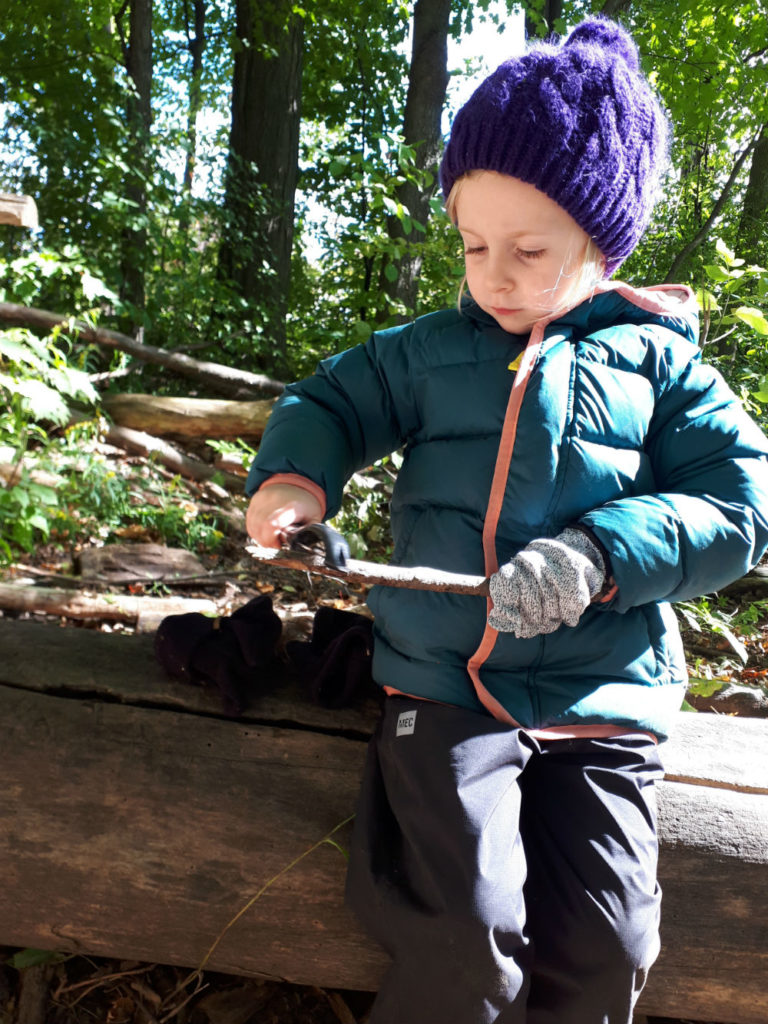
Many of us have seen electric drills being used before but very few had set eyes on a hand drill! Curious eyes watched as our teachers showed us how to turn the handle before pointing out the mechanism that moves, causing the sharp drill bit to turn.
At first, we were a little nervous. Our fingers could get pinched in there? That sharp tip can cut into the wood? With a little guidance, though, we each drilled a hole in our own bark name tag to be hung on our family board in the classroom!
Feeling successful in our first attempts at drilling, we were excited (and much less nervous) when we found ourselves working together in the woods, tying sticks together into a mobile and realized that we could add other materials to the mobile if we could put holes in them.
We knew how to use a drill so our experience was extended! We took turns using the drill to put holes in all kinds of found objects before tying them to the mobile with twine. When our time in the forest fell short of us finishing up, we simply brought the materials back with us and continued drilling and hanging them in the classroom. Our mobile, as you can imagine, is visually stunning proof of our new skills and our ability to collaborate with our friends to reach a common goal.
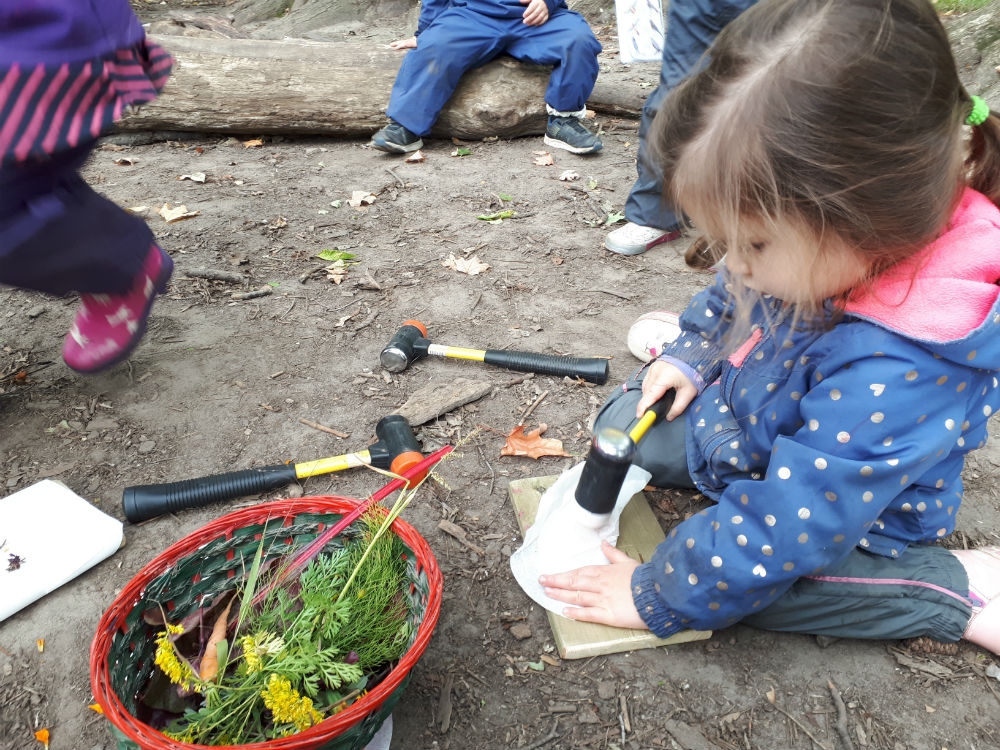
Most recently, we have put the hand drill to a different use. A couple of our friends, eager to pull apart the rotting centre of a recently felled tree decided that the drill would be helpful in their excavation. Careful not to bore into beetle homes, they held the drill at an unusual angle. Before long, they were creating holes and removing, little by little, the small pieces of tree guts which they excitedly showed their friends.
Moving on to using a saw
Our saw made its first appearance when we noticed a branch hanging in the forest that made a particular area unsafe to explore. Instead of avoiding the area, our teachers introduced us to a different solution: Removing the hazard to make the space safe.
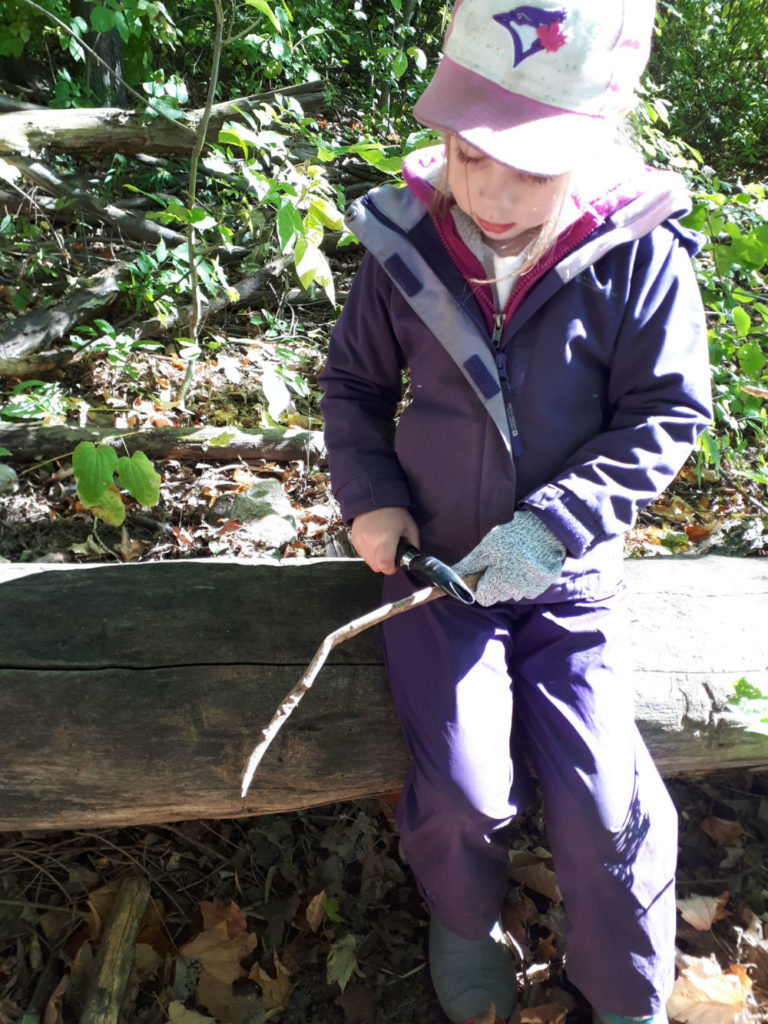
In this case, it was the broken tree branch. A space was outlined by the teachers for working in which meant we had to stay out. The “blood bubble” as we’ve come to know it is the area in which a tool is being used and therefore unsafe to enter. We were intrigued by the saw and, as you can imagine, we’re beyond excited when it was our turn to use it.
A couple of us had practised on small sticks but, when it came time to help mitigate risk in the forest, we were eager to be of help. We have been helping to remove pointy branches that could poke us from places we like to climb, as well as removing sharp, jagged bits from recently felled trees that could cut us as we use the space around them. One thing is for sure, sawing through wood with a bow saw is difficult to work!
Finally, we all giggled at the prospect of using vegetable peelers in the woods. Did you know that a vegetable peeler is sharp enough to slide the bark right off of a stick?
We have been practising using the peelers to smooth out the surfaces of sticks, using techniques generally reserved for whittling with a knife. With our respect for tools and for the blood bubble and as our confidence grows and our skills improve using the peelers, we will be able to eventually whittle wood with a real knife. That shouldn’t make you nervous.
Want to find out what else we have been up to? Please contact Discovery Child Care today. We’d be more than happy to answer any questions that you have.

